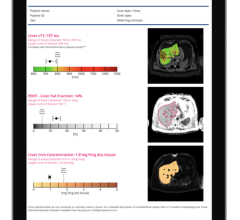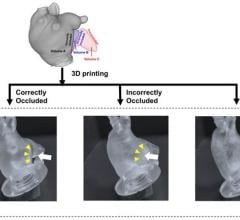
This August marks the 100th anniversary of the start of World War I in 1914. A few months after the start of the war, in early 1915, the Germans began using Zeppelins in the first application of strategic bombing over British cities. Zeppelin raids continued over Russia, Belgium, France, Italy and Britain for the duration of the war. These raids ironically paved the way for U.S. government policy that guaranteed access to the cryogenic gas required to operate today’s magnetic resonance imaging (MRI) systems.
The Achilles heel of the Zeppelin was its use of explosive hydrogen gas, which made these massive craft prone to
spectacular fires when they were shot down. This led the United States to look at using rare and expensive helium when it developed its own Zeppelin air fleet after WWI. Since the United States is one of the primary sources for helium, the supply was limited and its military application was considered very important, the U.S. government created the Federal Helium Reserve in the 1920s to regulate and protect the helium supply.
Although the threat of mass bombing raids by Zeppelins has long passed into the pages of history, the legacy of the legislation they helped create is still in existence and aids today’s MRI market.
Last October, the U.S. Congress passed legislation to
reauthorize, extend and improve operations of the Federal Helium Reserve in Texas. Today the need for this bill is more to guarantee the helium supply for high-tech applications, with much of this going toward MRI systems. Helium is a critical component for cooling MRI magnets. The systems must be regularly replenished with helium in order to maintain normal operating temperatures.
Congress’ approval of HR 527, the High Tech Jobs Preservation Act, was seen as a big step toward providing greater assurance of access to domestic supplies of refined helium. The approval was applauded by both the National Electrical Manufacturers Assn. (NEMA) and the Medical Imaging and Technology Alliance (MITA), with both organizations including key MRI systems vendors.
Today, the Federal Helium Reserve provides about 42 percent of U.S. crude helium and about 35 percent of the world’s demand. The bill authorizes the reserve to sell helium to private entities. If Congress failed to act on any helium legislation, the Federal Helium Reserve would have ceased operations. U.S. users of helium acquire much of their supply via industrial gas refining companies associated with the reserve.
Helium’s medical uses go beyond MRI, including lung tissue visualization, heart catheterization methods and medical lasers. Outside medicine, it is essential for the aerospace industry, aluminum helium arc welding, and computer chip and optical fiber manufacturing. It is also used in national defense applications such as rocket engine testing and purging, surveillance devices, air-to-air missiles and scientific balloons.
In a statement during debate on the bill last fall, the White House said a shutdown of the program would cause a spike in helium prices that would harm many U.S. industries and disrupt national security programs.
“The passage of this legislation will safeguard patient access to critical MRI scans that are used to detect, diagnose and treat disease, facilitate medical research at academic institutions around the country that are spearheading life-saving innovations, and prevent a needless disruption to the U.S. economy that would have put millions of jobs at risk,” said Gail Rodriguez, executive director of MITA, in a statement.


 October 31, 2025
October 31, 2025 








